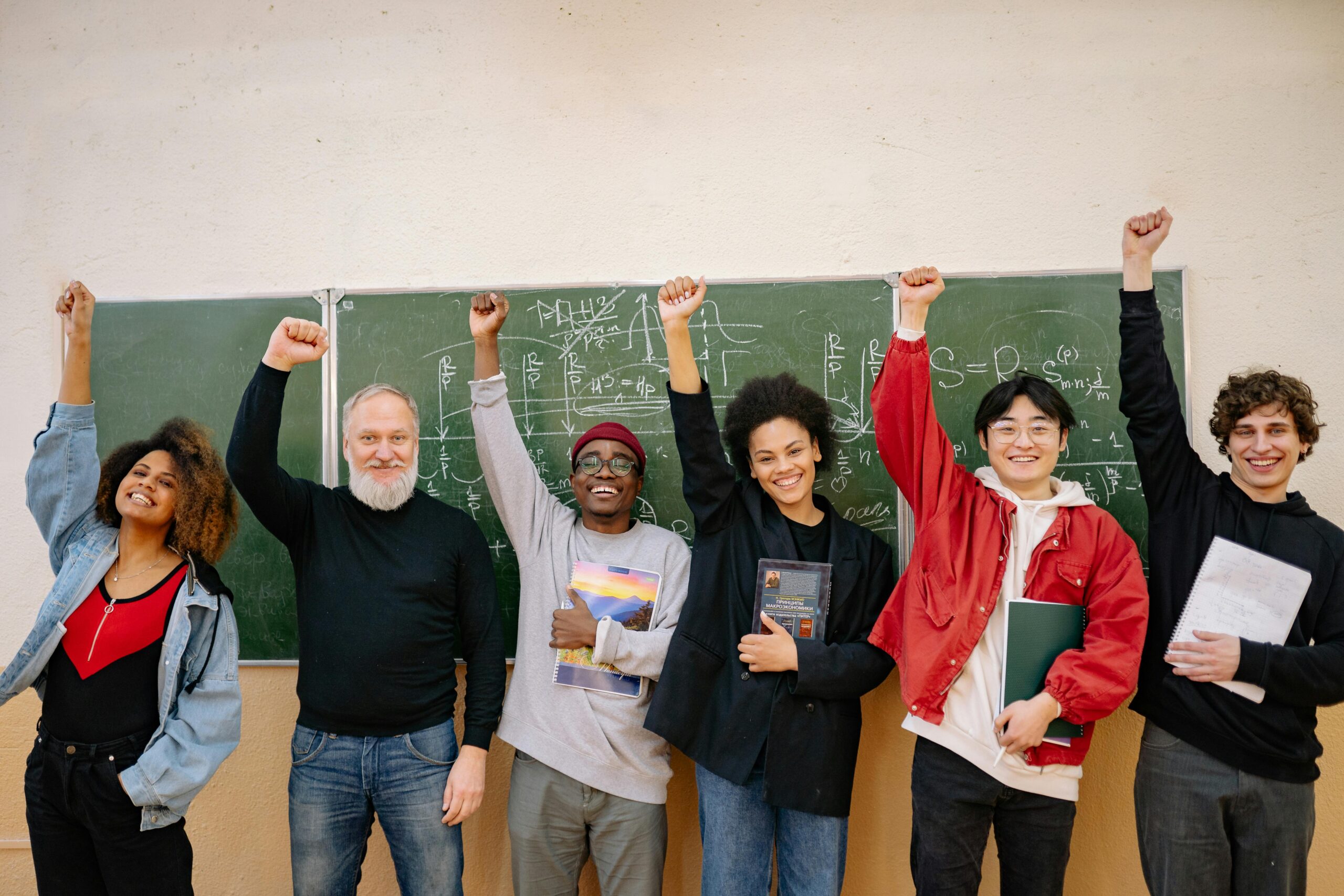Global literacy is no longer a distant dream but an achievable reality, powered by innovative education strategies and technological breakthroughs transforming lives worldwide.
📚 The Revolutionary Shift in Global Education
The landscape of education has undergone a remarkable transformation over the past two decades. What was once confined to traditional classrooms with chalkboards and textbooks has evolved into a dynamic, interconnected network of learning opportunities accessible to millions across continents. This educational revolution is fundamentally reshaping how we approach literacy, creating pathways for people from all backgrounds to access knowledge and develop critical skills.
The statistics paint an encouraging picture: global literacy rates have climbed from 82% in 2000 to nearly 87% today, with developing nations making particularly impressive strides. However, this progress masks significant challenges. Over 770 million adults worldwide still lack basic literacy skills, and the COVID-19 pandemic has threatened to reverse years of advancement, pushing millions of children out of school.
Yet within these challenges lies tremendous opportunity. The convergence of digital technology, innovative teaching methodologies, and renewed global commitment to education is creating unprecedented possibilities for reaching underserved populations and closing literacy gaps that have persisted for generations.
💡 Technology as the Great Equalizer
Digital platforms and mobile technology have emerged as powerful catalysts for educational transformation. Smartphones, now ubiquitous even in remote regions, have become portable classrooms delivering content to learners who previously had no access to formal education. Educational apps, online courses, and digital libraries are democratizing knowledge in ways that seemed impossible just a generation ago.
Artificial intelligence is personalizing learning experiences, adapting to individual student needs and learning paces. Machine learning algorithms can identify where students struggle and provide targeted interventions, while virtual reality transports learners to historical events or scientific phenomena they could never experience otherwise.
The impact extends beyond urban centers. Solar-powered tablets loaded with educational content are reaching children in areas without electricity. Low-bandwidth solutions ensure that slow internet connections don’t prevent access to quality educational materials. These innovations are particularly transformative in regions where teacher shortages and limited infrastructure have historically prevented educational access.
🌍 Bridging the Digital Divide
Despite technological advances, the digital divide remains a significant barrier to universal literacy. Approximately 2.9 billion people still lack internet access, predominantly in developing countries. This connectivity gap directly correlates with educational disadvantage, creating a cycle where those most in need of educational opportunities have the least access to digital learning tools.
Organizations and governments are tackling this challenge through innovative solutions. Community learning centers equipped with computers and internet access serve as educational hubs. Public-private partnerships are expanding broadband infrastructure to rural areas. Low-cost devices designed specifically for educational purposes are making technology more affordable for low-income families.
🎓 Reimagining Literacy for the 21st Century
Modern literacy extends far beyond reading and writing. Today’s definition encompasses digital literacy, media literacy, financial literacy, and critical thinking skills necessary to navigate an increasingly complex information landscape. This expanded understanding of literacy reflects the multifaceted demands of contemporary life and work.
Digital literacy has become as fundamental as traditional reading skills. Understanding how to evaluate online sources, protect personal information, and use technology effectively are essential competencies. Educational programs increasingly integrate these skills, recognizing that literacy in the digital age requires both traditional and new skill sets.
Financial literacy education empowers individuals to make informed decisions about money management, savings, and investment. This knowledge is particularly crucial in developing economies where access to formal financial education has been limited, yet economic participation is essential for poverty reduction.
📖 Innovative Teaching Methodologies
Progressive educators are moving away from rote memorization toward experiential, project-based learning that develops critical thinking and problem-solving skills. These methodologies engage students more effectively, improving retention and application of knowledge.
Gamification transforms learning into engaging experiences, using game mechanics to motivate students and make difficult concepts more accessible. Points, badges, and leaderboards tap into natural competitive instincts while making learning enjoyable.
Collaborative learning approaches emphasize peer-to-peer education, recognizing that students often learn effectively from each other. Group projects and discussions develop communication skills while reinforcing academic content.
👥 The Power of Community-Based Education
While technology offers tremendous potential, community-based approaches remain vital for sustainable educational impact. Local educators who understand cultural contexts, speak native languages, and recognize specific community needs provide irreplaceable value in literacy initiatives.
Community learning programs create safe, accessible spaces where adults can develop literacy skills without the stigma sometimes associated with returning to formal education. These programs often incorporate practical, immediately applicable content that resonates with adult learners’ real-world needs.
Mother-tongue education, which teaches initial literacy in students’ native languages before transitioning to national or international languages, has proven particularly effective. This approach honors cultural identity while building strong foundational literacy skills that transfer to subsequent language learning.
🤝 Family Literacy Programs
Intergenerational literacy initiatives engage entire families in learning, recognizing that parental literacy strongly influences children’s educational outcomes. When parents develop literacy skills, they become better equipped to support their children’s education, creating a multiplier effect that benefits entire communities.
These programs often combine adult literacy instruction with parenting education and child development activities. Parents learn alongside their children, strengthening family bonds while improving literacy across generations.
🌟 Success Stories Lighting the Way Forward
Real-world examples demonstrate what’s possible when innovative strategies meet committed implementation. Bangladesh’s literacy rate has increased from 47% to 74% over three decades through sustained government investment and community mobilization. The country’s focus on girls’ education has been particularly transformative, with female literacy rates rising dramatically.
Rwanda has emerged as an African education leader, achieving near-universal primary education enrollment following its commitment to education as a national priority. The country’s integration of technology in classrooms, including providing laptops to students, has accelerated learning outcomes.
India’s National Literacy Mission has reached hundreds of millions of adults through grassroots campaigns that mobilize community resources and volunteers. The program’s flexibility in adapting to local needs and languages has been key to its widespread success.
📱 Mobile Learning Revolution
Mobile-first educational platforms are reaching learners in unprecedented numbers. Apps designed for basic literacy instruction have been downloaded millions of times, with many users in developing countries accessing education for the first time through their phones.
SMS-based learning programs deliver bite-sized lessons to basic mobile phones, ensuring that even those without smartphones can access educational content. These programs have proven particularly effective for adult learners who can study during brief moments of free time throughout their day.
💪 Overcoming Persistent Barriers
Despite progress, significant obstacles continue to impede universal literacy. Poverty remains the most pervasive barrier, forcing families to choose between education and immediate economic survival. Child labor, particularly in agricultural communities and informal urban economies, prevents millions from attending school.
Gender inequality continues to disproportionately affect girls’ educational access. Cultural norms, early marriage, pregnancy, and safety concerns keep girls out of school in many regions. Addressing these barriers requires not just educational interventions but broader social change.
Conflict and displacement have created a generation of children without access to education. Refugee camps and conflict zones present unique educational challenges requiring flexible, trauma-informed approaches to learning.
🎯 Targeted Interventions
Successful literacy initiatives recognize that different populations require different approaches. Girls’ education programs that address safety concerns, provide separate facilities, and engage community leaders have proven effective at increasing female enrollment and retention.
Inclusive education strategies ensure that children with disabilities receive appropriate support and accommodations. Assistive technologies and specialized training for teachers are making education accessible to learners with diverse needs.
Programs targeting out-of-school youth provide flexible schedules, relevant vocational content, and accelerated learning pathways that recognize older students’ different needs and capabilities.
🔮 The Future Landscape of Global Literacy
Emerging technologies promise to further revolutionize education. Artificial intelligence tutors will provide personalized instruction at scale, adapting to each student’s learning style and pace. Augmented reality will bring abstract concepts to life, making complex subjects more tangible and understandable.
Blockchain technology could create verifiable, portable educational credentials that follow learners throughout their lives, particularly valuable for mobile populations and refugees. This could revolutionize how educational achievements are documented and recognized globally.
Neuroscience insights are informing more effective teaching strategies based on how the brain actually learns. Understanding cognitive development, memory formation, and attention mechanisms enables educators to design more effective learning experiences.
🌱 Sustainable Education Systems
Building lasting literacy gains requires sustainable education systems with adequate funding, trained teachers, appropriate infrastructure, and community support. Short-term projects, while valuable, cannot replace systemic investments in education.
Teacher training and support are critical components often overlooked in literacy initiatives. Well-prepared, motivated educators deliver better outcomes, yet many regions face severe teacher shortages and inadequate professional development opportunities.
Curriculum relevance ensures that education connects to students’ lives and future opportunities. When learners see the practical value of literacy skills, motivation and persistence increase significantly.
🚀 Policy and Investment Imperatives
Achieving universal literacy requires political will and sustained financial commitment. Countries that prioritize education in national budgets and policy frameworks consistently achieve better literacy outcomes. International cooperation and development assistance play crucial roles in supporting nations with limited resources.
Public-private partnerships leverage resources and expertise from multiple sectors. Technology companies, educational organizations, governments, and civil society groups collaborating can achieve greater impact than any single entity working alone.
Measuring progress through reliable data collection enables evidence-based policy decisions and resource allocation. Robust educational statistics systems help identify gaps, track progress, and hold stakeholders accountable for results.

✨ Building Momentum for Universal Literacy
The path to universal literacy is challenging but achievable. Current trajectories, if sustained and accelerated, could bring functional literacy to virtually all of humanity within a generation. This achievement would represent one of the greatest advances in human development, unlocking potential and transforming lives on an unprecedented scale.
Every literate individual represents not just personal achievement but ripple effects throughout families, communities, and societies. Literacy empowers people to participate fully in civic life, access better employment opportunities, protect their health, and make informed decisions about their lives.
The future of global literacy depends on continued innovation, sustained commitment, and inclusive approaches that reach the most marginalized populations. Technology will play an increasingly important role, but human elements—dedicated teachers, supportive families, and engaged communities—remain irreplaceable.
As we look toward this brighter tomorrow, the evidence is clear: education is humanity’s most powerful tool for creating positive change. By unlocking minds through literacy, we unlock potential for innovation, understanding, and progress that benefits everyone. The future of global literacy isn’t just revealed—it’s being actively created by millions of learners, educators, and advocates worldwide, writing a new chapter in human development where knowledge truly becomes accessible to all. 🌏
Toni Santos is an education futurist and learning design researcher dedicated to reimagining how people build skills in a fast-changing world. With a focus on cognitive tools, EdTech innovation, and equitable access, Toni explores systems that help learners think deeper, adapt faster, and learn for life. Fascinated by the science of learning and the power of technology to personalize growth, Toni’s journey bridges classrooms, startups, and global initiatives. Each project he shares is an invitation to transform education into a continuous, human-centered experience—where curiosity, practice, and purpose align. Blending learning science, product design, and policy insight, Toni studies models that turn knowledge into capability at scale. His work highlights how thoughtful design and inclusive technology can unlock talent everywhere—across ages, cultures, and contexts. His work is a tribute to: Cognitive learning tools that make thinking visible and transferable EdTech innovation that expands access and personalizes pathways Lifelong learning systems that support relevance, resilience, and purpose Whether you’re building a learning product, shaping policy, or growing your own skills, Toni Santos invites you to design learning for tomorrow—one insight, one practice, one empowering pathway at a time.




